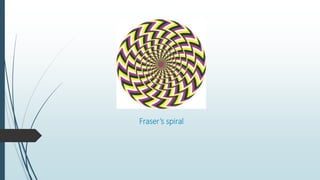
“Investigating the Effects of Optical Illusions on Architectural and Design Practices”

### The Realm of Optical Illusions: Delving into *Illusion in Design* by Rizzoli
Our understanding of the world hinges on reality—or so we think. Occasionally, a cleverly designed illusion can completely disrupt our beliefs. This is the essence of *Illusion in Design*, a fresh coffee table book from Rizzoli. Through a visual exploration of the captivating realm of trompe l’oeil, the book examines how designers, architects, and artists confront perception, crafting spaces, items, and artworks that serve to bewilder and amaze. Lacking instant explanations alongside the visuals, readers are encouraged to engage their inquisitiveness and observational abilities to reveal the mysteries concealed within each visual enigma.
### A Visual Crossword Enigma
*Illusion in Design* beckons readers to traverse its six chapters akin to solving a crossword puzzle—seeking significance through observation instead of depending on immediate clarification. Rather than swiftly uncovering the truths behind each illusion, readers must gradually assemble the hints, with satisfying rewards awaiting them at the conclusion of each chapter. This method transforms the experience into a playful journey of discovery, immersing the audience in a direct encounter with the craft of deception.
Consider the 2016 *Van Gogh’s Bedroom* exhibit, fashioned by the Art Institute of Chicago, as a prime example. At first sight, the showcased room appears as a two-dimensional artwork created in Van Gogh’s signature color scheme and brush techniques. Nevertheless, upon closer examination, nuanced details imply its three-dimensional nature, unveiling it as an exact, life-sized replica of the artist’s famed piece. Developed to promote an exhibition of Van Gogh’s works, this immersive creation also met a practical need—visitors could rent the room for merely $10 a night, momentarily entering one of art history’s most cherished creations.
### Illusions in Architecture and Design: When Reality Blurs
Architecture and interiors frequently host some of the most striking illusions, as illustrated in *Illusion in Design* with awe-inspiring instances like the *Mirrorcube* by Tham & Videgård. Situated within the Treehotel in Sweden, the cube-shaped edifice seems to vanish into the adjacent forest. Its reflective glass façade bewilders observers, camouflaging the structure so well that it appears to dissolve into the surrounding natural scenery. This illusion transforms what could otherwise disrupt the environment into something that integrates seamlessly with its surroundings.
Another remarkable achievement of illusion-driven design is Boa Mistura’s *Anamorphosis Projects*, a collection of expansive, interactive installations that utilize painted words and forms to create visuals that look coherent and clear from specific angles. Created for the hills of Vila Brasilândia, these works employ the technique of anamorphism to present a fragmented text puzzle that becomes art when observed from the correct viewpoint.
### Distorting Reality Through Two-Dimensional Media
While certain illusions depend on architecture or environmental design, others tap into the capabilities of two-dimensional media to deceive the eye. Designers like Boa Mistura craft brilliant illusions by manipulating perspective, while others, such as Stelios Moussaris, extend the limits of physical dimensions with sculptural design. A noteworthy creation by Moussaris includes furniture that appears fantastical, as if suspended in a state of physical metamorphosis.
The book also investigates how classic tools like mirrors amplify the drama of perception. Mirrors, both a simple and striking medium, have long been utilized to warp spatial awareness. Shirin Abedinirad’s reflective installations lie in the space between minimalism and enchantment—uncomplicated arrangements of mirrors on desert vistas transform the way viewers perceive the earth and sky, merging them into a singular, surreal tableau.
### Camouflage, Trickery, and Spectacle
At its heart, *Illusion in Design* showcases the artistic genius behind endeavors that challenge physics, visual reality, and human anticipation. By delving into themes of camouflage, distortion, and depth, the book illustrates that optical illusions are more than mere tricks—they are narrative instruments that can inspire awe, elicit emotions, and question norms.
Through its thoughtfully curated illusions, the book beckons readers to contemplate deeper inquiries: How does design shape perception? Where does illusion conclude and reality commence? And ultimately, how does the act of solving a puzzle—or interpreting an image—influence our interaction with the surrounding world?
### An Expedition Into the Extraordinary
*Illusion in Design* not only honors the potency of visual deceit but also reminds us of the delight found in discovery. By withholding immediate interpretations, the book actively engages its readers in an interactive experience that encourages them to unravel its secrets at their own rhythm. This focus on curiosity and interaction elevates *Illusion in Design* beyond a typical coffee table book—it becomes a portal into a realm where perception transforms into play.
Available now on platforms like [Bookshop](https://bookshop.org/a/17156/9780789345912) and the [